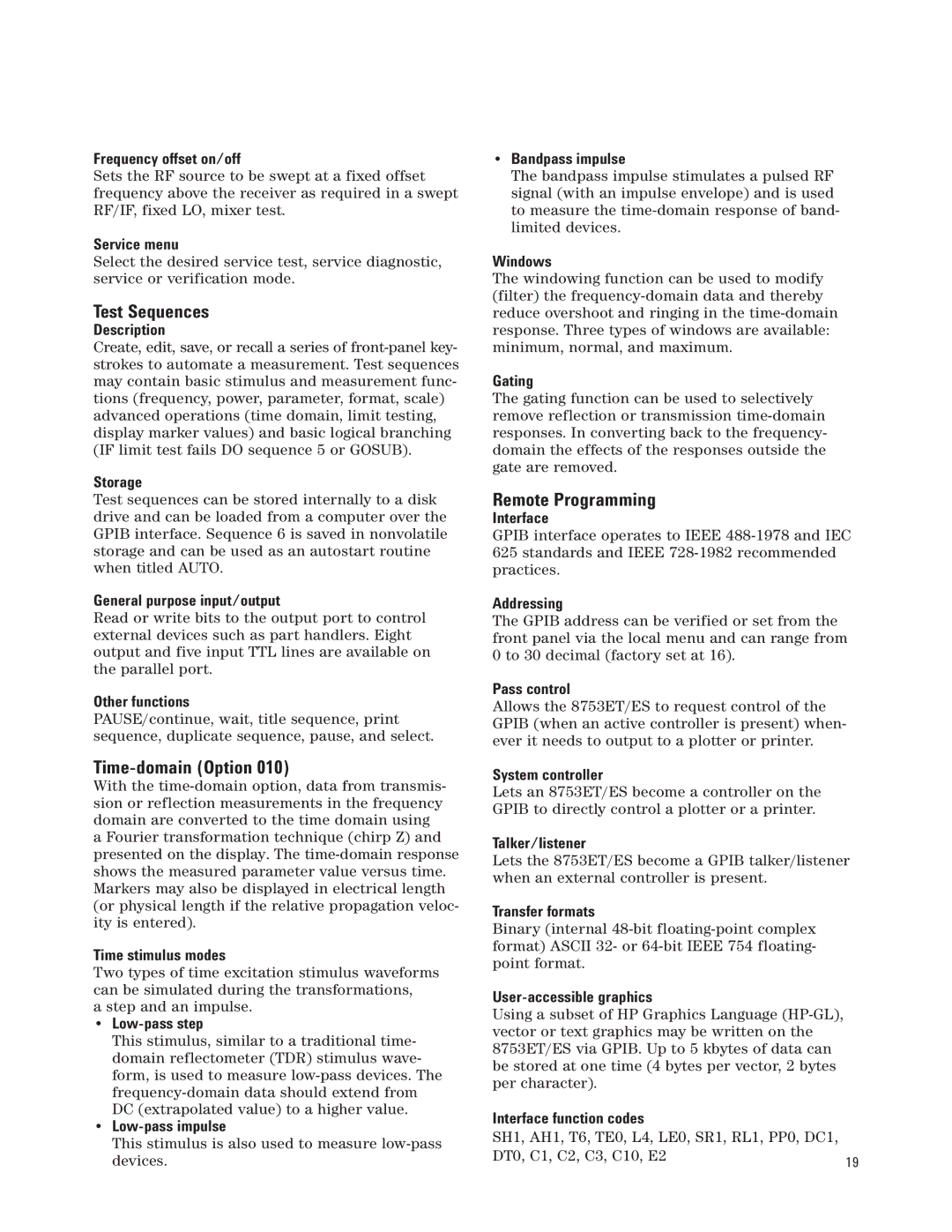Frequency offset on/off
Sets the RF source to be swept at a fixed offset frequency above the receiver as required in a swept RF/IF, fixed LO, mixer test.
Service menu
Select the desired service test, service diagnostic, service or verification mode.
Test Sequences
Description
Create, edit, save, or recall a series of
Storage
Test sequences can be stored internally to a disk drive and can be loaded from a computer over the GPIB interface. Sequence 6 is saved in nonvolatile storage and can be used as an autostart routine when titled AUTO.
General purpose input/output
Read or write bits to the output port to control external devices such as part handlers. Eight output and five input TTL lines are available on the parallel port.
Other functions
PAUSE/continue, wait, title sequence, print sequence, duplicate sequence, pause, and select.
Time-domain (Option 010)
With the
Time stimulus modes
Two types of time excitation stimulus waveforms can be simulated during the transformations,
a step and an impulse.
•Low-pass step
This stimulus, similar to a traditional time- domain reflectometer (TDR) stimulus wave- form, is used to measure
•
This stimulus is also used to measure
•Bandpass impulse
The bandpass impulse stimulates a pulsed RF signal (with an impulse envelope) and is used to measure the
Windows
The windowing function can be used to modify (filter) the
Gating
The gating function can be used to selectively remove reflection or transmission
Remote Programming
Interface
GPIB interface operates to IEEE
Addressing
The GPIB address can be verified or set from the front panel via the local menu and can range from 0 to 30 decimal (factory set at 16).
Pass control
Allows the 8753ET/ES to request control of the GPIB (when an active controller is present) when- ever it needs to output to a plotter or printer.
System controller
Lets an 8753ET/ES become a controller on the GPIB to directly control a plotter or a printer.
Talker/listener
Lets the 8753ET/ES become a GPIB talker/listener when an external controller is present.
Transfer formats
Binary (internal
User-accessible graphics
Using a subset of HP Graphics Language
Interface function codes |
|
SH1, AH1, T6, TE0, L4, LE0, SR1, RL1, PP0, DC1, |
|
DT0, C1, C2, C3, C10, E2 | 19 |
|
